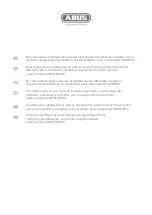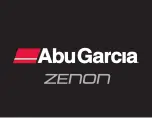
6
© Ferno Washington Italia ScoopExl - Rel.161115 - ENG
SCOOP EXL Stretcher
Training / The Stretcher
3.2 CE compliance
MEDICAL DEVICES DIRECTIVE
Ferno's products meet the requirements of
European Directive 93/42/EEC concerning
medical devices.
For more information: www.ferno.it
2 - TRAINING AND RESPONSIBILITIES OF OPERATORS
2.1 Skills
Operators who use the stretcher must:
●
have specific experience in immobilization, handling,
and recovery of patients.
●
possess the appropriate skills to assist the patient.
2.2 Training
Users are required to:
●
Read and understand all information in this manual.
●
Attend a suitable training course on the use of the
stretcher.
●
Practice with the stretcher before using it in real
situations with patients.
WARNING
Untrained users may injure themselves and/or
cause damage and/or physical harm. Allow only
trained and qualified staff to use the SCOOP EXL
stretcher
.
3 - THE STRETCHER
3.1 Description
The atraumatic SCOOP EXL stretcher (known as the
"stretcher" in this manual) is a device made for the aid,
immobilization and transport of the patient. The stretcher
should be used only by trained and qualified staff. Any
additional assistance needed to handle heavy patients and/
or when the situation demands it must always comply with
applicable healthcare protocols.
The stretcher can be adjusted in length according to the
height of the patient up to 2100 mm. It can be folding away
by placing the foot section within the body section, and can
be divided into two or four parts for storage (see section 6.7
Storage
, page 30).
From serial number S/N 30001, the SCOOP EXL stretcher
has been built with non-ferromagnetic metal components so
that it can be used in magnetic fields with values no greater
than 1.5 T. The field test carried out on the stretcher (model
65EXL-NM) exposed to a magnetic field with values up to
1.5 T, produced the following results:
- the device suffered no stress in any of the fields;
- no eddy currents were detected while the device was
moved within the fields;
- there were no appreciable temperature changes over the
patient contact areas (all below 35° C) of the stretcher in
any of the fields;
STRETCHER COMPONENTS
●
Lifting handles (2 at the head end, 2 by the feet)
●
Side handles (8, 4 on each side): each handle has a pin
inside for attaching the restraint hook.
●
Small side holes (2) for fastening the "H"-shaped
Velcro band for the 365-E head immobilizer
●
TSL Twin Safety Lock coupling systems (2). Each
TSL is fitted with buttons to open the stretcher.
●
Side locking handles (2) for adjusting the length of the
stretcher
●
Pin for attaching the restraint hooks (8)
●
log the training sessions. An example of a form for
logging the training sessions can be found on page 35.
Important
The operators must be able to ensure the safety of
both themselves and their patients while using the
stretcher. They must be able to assess the number
of people needed to move the patient according to
applicable regulations.
- imaging is possible without any problems and without any
registered artifacts;
- a complete thermograph immediately subsequent to the
imaging revealed no changes in the stretcher's temperature.







































